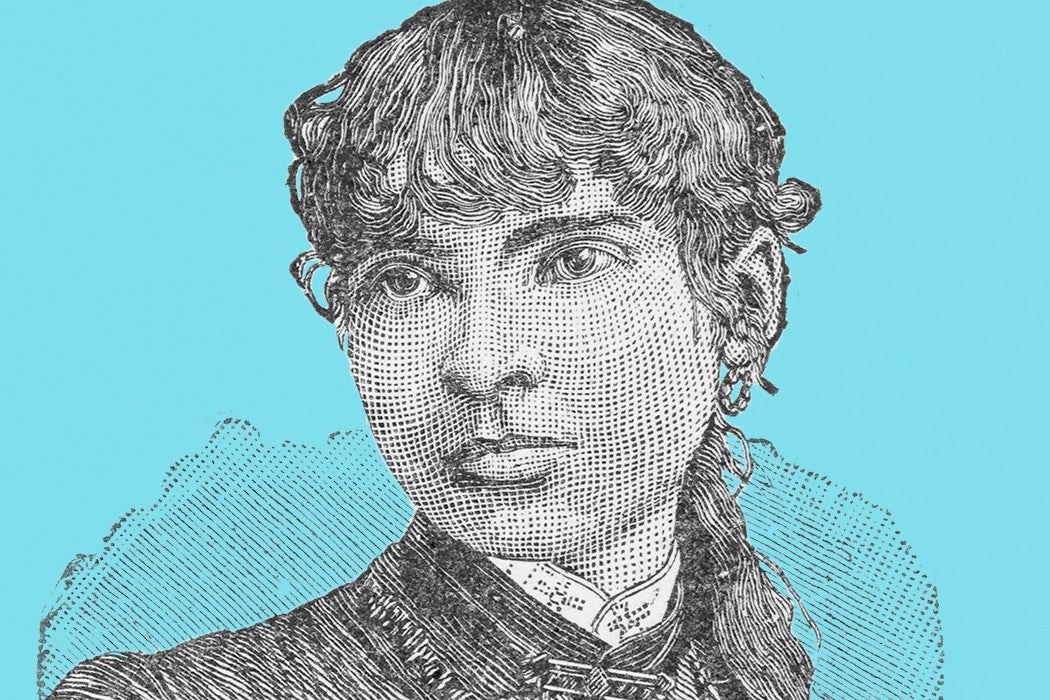Historical research is a sort of magic that reveals what was hidden—places, people, events. But how does that history get lost in the first place? As the time between then and now extends, some topics and events are overlooked or under-reported. That’s certainly the case for writer Lucretia Howe Newman Coleman. In her time, Coleman was a notable figure, but, as literary scholar Jennifer Harris writes, even though she was well-represented in histories of Black women writers written she was alive, “Coleman has, for the most part, been absent from broader contemporary considerations of late-nineteenth-century African American women’s literature.”
Coleman was born in the mid-1850s in Dresden, a Canadian town in southwest Ontario. Dresden was an Underground Railroad terminus and home of the Dawn Settlement. According to its founder, Josiah Henson, the Dawn Settlement was populated by free and formerly enslaved Black people with the goal of showing “that the Negro, given a fair chance and a square deal, could measure up to the standards of the white man, both in self-support and mental development.”
Coleman’s father, William P. Newman, was a minister and Oberlin graduate who had come to the Dawn Settlement from Virginia in 1843, writes Harris. The family briefly moved back to the United States when he became pastor of Baker Street Baptist Church in Cincinnati. After the passage of the Fugitive Slave Law in 1850, they returned to Canada where Newman became editor of an abolitionist newspaper. Her father’s work was likely a huge influence on Coleman’s own writing career. As Harris explains, she
would have had early exposure to the daily operations of newspapers and publishing. Even if she was not directly involved in the paper’s production, she would have been privy to conversations about the business of producing a paper and its purpose and potential in advancing [B]lack causes.
However, by 1866, Coleman had lost both of her parents. This left her with an inheritance, and it meant another move. This time, along with her stepmother and siblings, she moved to Appleton, Wisconsin, where she and her stepsister were the first Black students to attend Lawrence University, though Coleman didn’t graduate. Instead, she took up a series of jobs, including teaching at a Black school in Frankfort, Kentucky, and working as assistant secretary and bookkeeper for a church in Nashville.
Moving back to an area with a vibrant Black community also meant that Coleman, like her father, could become involved in the Black press. Her first publication was likely “Apostrophe to Wendell Phillips,” issued in March 1884. The piece on the recently deceased abolitionist was “notable for its assured voice,” Harris writes.
Coleman’s work also appeared in the American Baptist and Our Women and Children, a “venue of some import for African American women in publishing.” And throughout the late 1880s and early 1890s, she began to branch out into creative writing, including a serialized novel that ran in Our Sunday School Review. The novelized biography, Poor Ben, is one of the few pieces of her work that survives today.
Lucretia Howe Newman married Robert Joseph Coleman in 1884, still continuing to write. She also maintained the activist streak that was ingrained in her as a girl, joining several civil rights groups. And though many women involved in these groups were also writers, it meant something deeper for Coleman.
“[W]riting was a part of her intellectual life; it was also her means of participating in and contributing to her community, fostering literacy, culture, and debate,” Harris notes. And perhaps it was her activism and sense of justice that led her to divorce her husband—“a radical step for the era”—after years of abuse.
Weekly Newsletter
Today Coleman exists in fragments. Most of her writing has been lost and, as Harris explains, she “became in death—and in scholarship—what she never was in her own writing: a footnote.” Her absence also tells a bigger story about documenting women’s history, particularly that of Black women.
“Coleman reminds us that there were legions of uncredited African American women participating in literary cultures throughout cities in the American Midwest,” Harris writes.
Those careers may not look like careers to us because they did not follow a trajectory we recognize, one premised upon consistent publication. Such careers may seem less accessible or even noteworthy because of their inconsistencies. But this does not mean they were any less of an achievement, or source of pride, for the women themselves, or that they constitute a lesser contribution to their worlds.
Our knowledge of those careers is imperfect, but Harris argues that shouldn’t leave us “in a critical morass.” Historians may not be able to fully recover the lost history of an individual, but the attempt can “contribute to the formation of frameworks necessary for better understanding the less documented practices of African American literary culture.”







